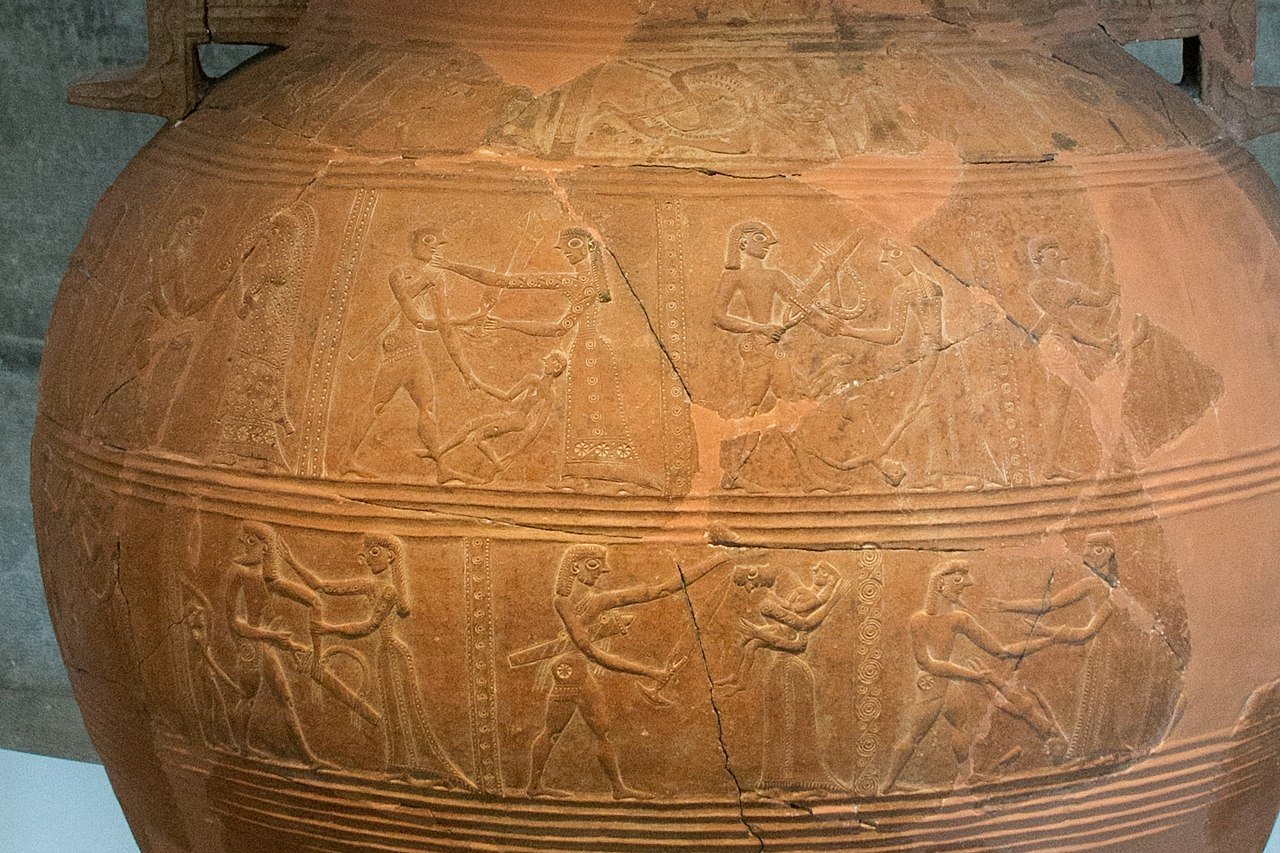

An ancient vase discovered on Mykonos redrew the history of the Trojan War, which has captivated the imaginations of people for centuries, with its tales of heroic battles, cunning deception, and the devastating consequences of human conflict.
In 1961, construction workers unearthed a large terracotta storage jar, or pithos, dating back to around 675–650 BC. This vessel, now known as the Mykonos Vase, offers the earliest known visual representation of the Trojan Horse, a pivotal element in the saga of the Trojan War.

Standing at 1.34 meters tall, the vase’s neck features a detailed relief of the wooden horse, complete with warriors peering through portholes—a vivid depiction of the Greeks’ cunning stratagem.
The warriors that surround the horse are represented in a formulaic manner. Their heads and legs appear behind rounded bossed shields and they carry spears. Those presented on the upper metope are portrayed in a similar fashion.
Below, three bands of scenes portray the brutal aftermath: Greek soldiers attacking defenseless Trojan women and children. Notably, the absence of male Trojan defenders shifts the focus to the suffering of civilians, highlighting the war’s devastating impact on non-combatants.
Susanne Ebbinghaus, in her article “Protector of the City, or the Art of Storage in Early Greece,” published in the Journal of Hellenic Studies (2005), interprets the Mykonos Vase as a form of “conspicuous storage” that served as a moral reminder for the elite.
She argues that the vase illustrates the dire consequences of failing to protect one’s city, depicting scenes where men are killed and women and children are subjected to violence and enslavement. This portrayal aligns with themes found in ancient Greek epics, emphasizing the brutality of war and the responsibilities of leadership.
Dimosthenis Vasiloudis, writing for The Archaeologist in 2022, highlights the vase’s unique focus on the victims of war. He notes that the absence of Trojan warriors and the depiction of vulnerable women and children suggest a critique of the Greeks’ merciless tactics during the sack of Troy.
The separation of scenes into deception and slaughter emphasizes the brutality inflicted upon non-combatants, offering a profound commentary on the nature of human conflict and the innocent lives affected by it.

The Mykonos Vase not only provides a rare glimpse into early Greek artistry but also underscores the enduring power of myth. Its detailed narrative predates many literary accounts, offering a visual testament to stories that have shaped Western cultural consciousness.
Today, the vase resides in the Archaeological Museum of Mykonos, inviting visitors to reflect on ancient narratives and the timeless themes of war, suffering, and human resilience.
Related: Trojan War: Unveiling the Truth About Warfare in Homer’s Iliad
